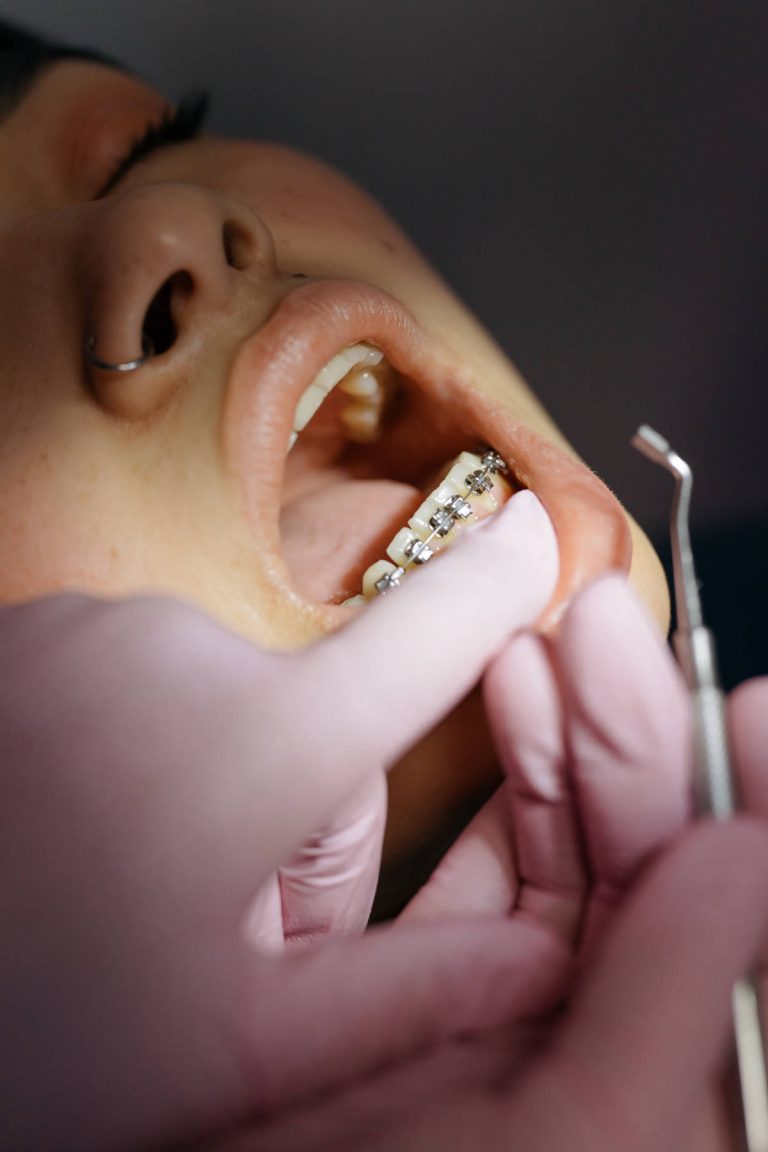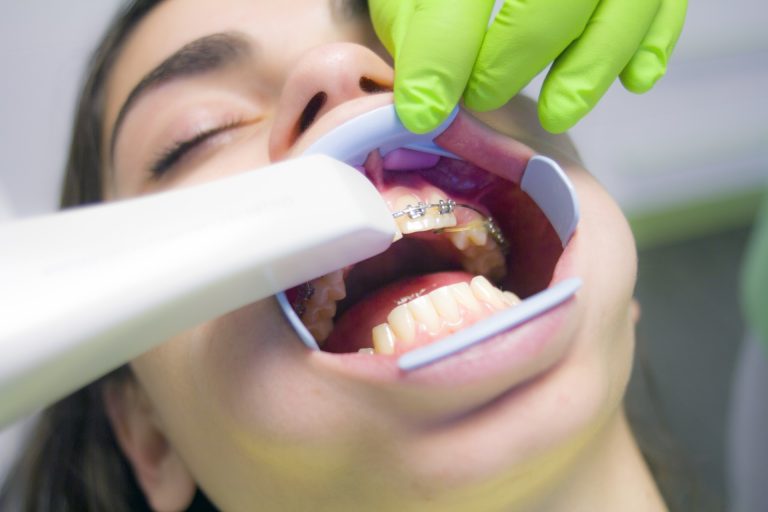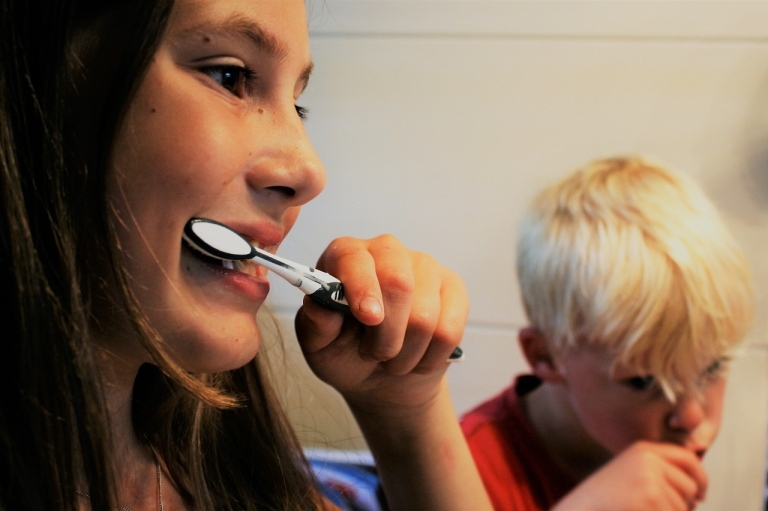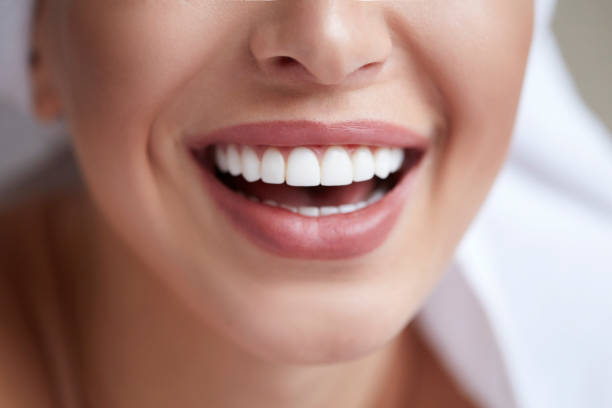Orthodontic treatments can lead to straight, beautiful teeth after braces. But, when you’re not happy with the results, what can you do?
Here are some steps you can take:
- Speak to your orthodontist. They may be able to fix any imperfections or suggest extra treatment, like refinements or cosmetic procedures. Working closely with your orthodontist can get you the outcome you want.
- Get a second opinion from another orthodontist. They may have new ideas or solutions that better fit your expectations. This helps you make a decision.
- Be patient. Teeth can still move even after braces are off, so give them time to settle before doing anything else.
- Keep up with oral hygiene and follow post-braces care instructions. This can help your teeth look better. Regular dental visits and cleanings can spot any problems quickly.
It’s normal to be unhappy with orthodontic treatment. There are ways to address it. Chat to your orthodontist and explore your options – you could get the smile you want!
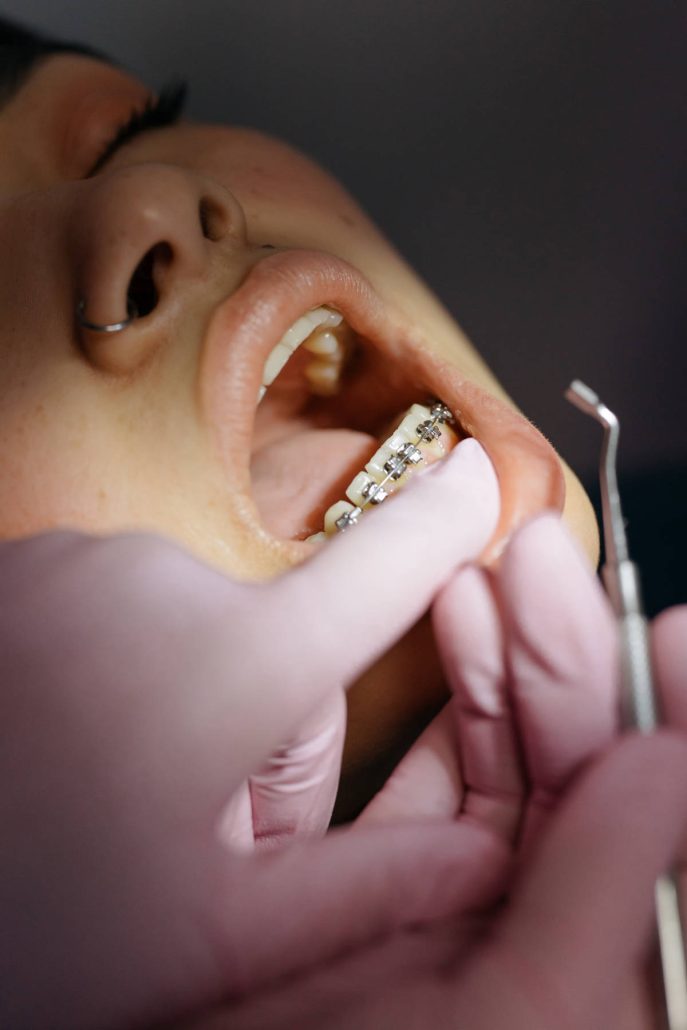
Understanding the potential dissatisfaction with teeth after braces
Retention Phase: Orthodontist’s instructions must be followed to prevent relapse. Wear retainers!
Temporary Appearance Changes: Teeth may appear yellow or uneven. Just temporary though.
Minor Adjustments: Tooth contouring or bonding can address aesthetic concerns.
Psychological Impact: Self-esteem and confidence can be negatively affected. Seek support from professionals.
Good oral hygiene during treatment is essential. Cleanings and check-ups can minimize dissatisfaction.
Jane Turner experienced discontentment despite successful orthodontic treatment. Minor gaps between her front teeth remained. Orthodontist provided a solution with tooth contouring. Result? Desired outcome and renewed satisfaction.
Knowledge of potential dissatisfaction with teeth after braces helps manage post-braces concerns. Aiming for optimal outcomes in aesthetics and oral health is important.
Reasons for not being happy with teeth after braces
To address reasons for not being happy with your teeth after braces, delve into the misalignment or relapse of teeth, unsatisfactory appearance or aesthetics, and discomfort or pain.
Misalignment or relapse of teeth
Jacob was delighted with the results of his braces–his teeth were perfect! But then, they started to misalign. He was mystified. His orthodontist gave him the scoop: misalignment or relapse of teeth can be caused by a few things.
| Cause | Explanation |
|---|---|
| Shifting habits like thumb-sucking or tongue-thrusting | Habits can cause undo stress on the teeth and cause them to move |
| Not wearing retainers properly | Retainers help keep teeth in place and help prevent relapse |
| Changes in facial bones or jawline due to growth/development | As the body grows, the teeth can be affected |
| Inadequate orthodontic treatment | Not following the treatment plan can cause relapse |
Everyone’s situation is different, though–other factors could be behind Jacob’s relapse. So, they created a plan, just for him, to get those teeth back in line.
Unsatisfactory appearance or aesthetics
Shape and size concerns of teeth can be common. Braces can sometimes make people’s teeth seem too big or small when compared to their face. This can be embarrassing, and affect self-esteem.
Also, braces do not affect tooth color. If someone had stained teeth before, they may still have that issue after treatment.
Texture can also be a concern. Unevenness or rough edges may be felt when running the tongue over the teeth. This can make people feel uneasy about their smile.
For example, Emma had braces for two years. After they were removed, her front two teeth seemed shorter than the others. She felt embarrassed to show her smile and was unhappy with her new look.
Discomfort or pain
Soreness is expected after getting braces. Pressure on teeth can lead to discomfort, especially in the beginning. Brackets and wires may rub against the inside of the mouth, causing ulcers or sores. Teeth may become sensitive to hot or cold temperatures. Adjusting braces can give you tension headaches. Elastic bands may be too tight or placed incorrectly, leading to irritation. Tightening appointments can also bring discomforts.
Individual experiences may vary. Speak to your orthodontist; there may be solutions tailored to you.
Good oral hygiene, brushing and flossing, can help with discomforts. Orthodontic wax provided by your orthodontist can reduce friction between brackets and soft tissues.
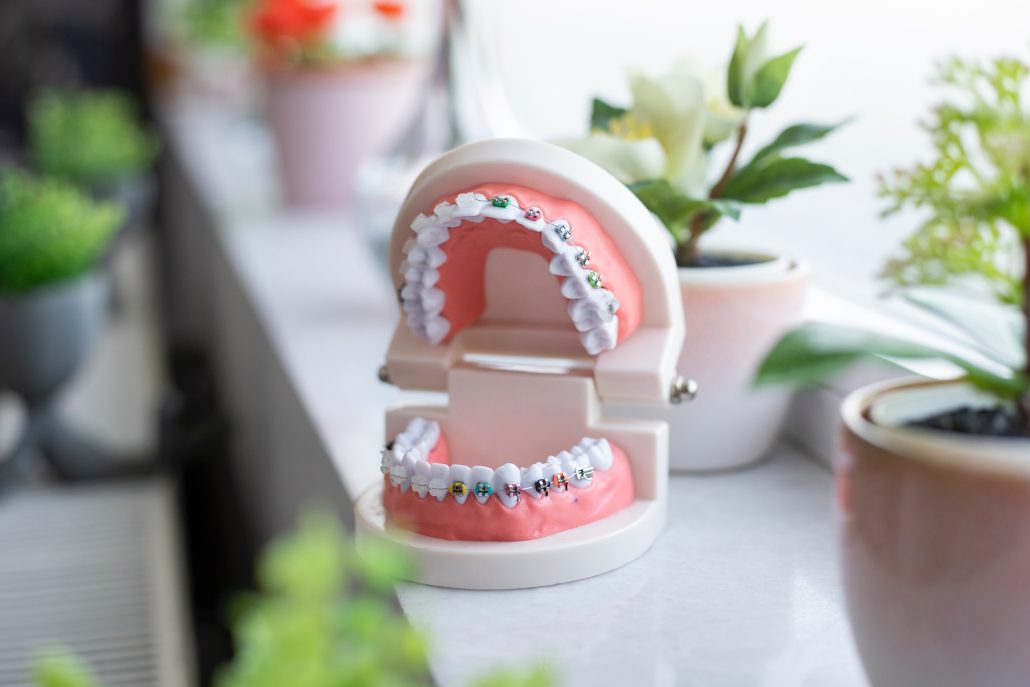
Options for addressing dissatisfaction with teeth after braces
To address dissatisfaction with your teeth after braces, explore orthodontic solutions, restorative solutions, and communicate with your orthodontist or dentist. These options provide a range of solutions for enhancing your smile and achieving the desired results post-braces. With careful consideration and guidance from professionals, you can find the best path forward to achieve the smile you desire.
Orthodontic solutions
Orthodontic Solutions are a way to make teeth look better after braces. Retainers can help keep teeth in their new position. Clear aligners are a discreet option for further adjustments. Dental veneers can cover imperfections and enhance the look of teeth. Sometimes corrective jaw surgery may be needed to address structural issues. Orthodontic solutions have a long history of success and are constantly evolving with technology. They provide patients with effective, personalized treatment options to achieve their desired results.
Orthodontic adjustments or refinements
Orthodontic readjustment or modifications can help individuals who are not happy with their teeth after braces. These changes aim to refine the position of the teeth, so patients can get their desired outcome.
Let us look at a table of key points about orthodontic readjustments or modifications:
| Aspect | Description |
|---|---|
| Objective | Fine-tune tooth alignment and address any remaining worries |
| Process | Evaluation by an orthodontist followed by the needed changes |
| Timeline | Usually done after the original braces treatment is done |
| Length | Dependent on individual cases and specific needs |
It is essential to note that each case is unique, and orthodontic adjustments could be different from person to person. Issues such as bite alignment, spacing problems, or bite discrepancies can influence the necessity for modifications.
Moreover, it is important to consult an experienced orthodontist who can evaluate your particular condition and decide if orthodontic adjustments are necessary. They will take into account your worries and goals to make a customized treatment plan.
To sum up, orthodontic adjustments or refinements provide individuals who are unhappy with their post-braces results a chance to get their desired result. Consulting with an experienced orthodontist will direct you towards the best action.
In conclusion, getting professional guidance regarding any dissatisfaction post-braces will help make sure successful outcomes.
Invisalign or clear aligner treatment
Invisalign or clear aligner treatment is a great way to improve the look of teeth after braces. This treatment involves wearing custom-made, virtually invisible aligners which gradually shift the teeth into their desired position.
The clear aligners have many benefits, like being:
- Almost undetectable.
- Removable.
- Easy to clean around.
- No dietary restrictions.
This procedure also offers details that set it apart from other options. The aligners fit perfectly for each patient, making tooth-shifting less uncomfortable than traditional braces.
To understand how this treatment can improve teeth after braces, here are some suggestions:
- Better looks: Invisalign’s invisibility makes it a great option for those who are self-conscious.
- More convenient: The removable feature enables easier maintenance of oral hygiene.
- Eat freely: With these aligners, you can enjoy any food without restrictions.
- More comfortable: The gradual shifting of teeth reduces discomfort compared to standard braces.
By taking these points into consideration, you can make an informed choice regarding Invisalign or clear aligner treatment for your teeth.
Restorative solutions
Restorative solutions can be a great choice for improving the look of your teeth. Some possibilities are dental bonding, tooth-colored fillings, and porcelain veneers. Crowns, implants, and orthodontic treatments can also be used.
Cost, time commitment, and maintenance requirements should all be taken into consideration.
Sarah is an example of success with restorative solutions. She finished her orthodontic treatment, but was unhappy with discolored teeth. Her dentist suggested porcelain veneers, and after the procedure, Sarah was proud to show off her radiant smile.
Dental veneers or bonding
Dental veneers or bonding is a choice for those who are not content with their teeth after braces. Here are 6 points to think about:
- Veneers involve covering the outside of teeth with custom-made porcelain shells to fix discoloration, crookedness, or gaps.
- Bonding uses tooth-coloured resin to reshape or repair damaged teeth. It’s cheaper than veneers.
- You need a consultation with a dentist to decide if you are suitable and talk about what you want.
- Veneers are permanent and can last up to 15 years, while bonding may need to be changed every 5-10 years.
- Veneers need a thin layer to be taken off the enamel, while bonding needs only minimal tooth surface preparation. Both require several visits.
- Patients are usually happy with veneers or bonding as they make smiles look better.
It’s important to remember that these options should only be thought of after orthodontic treatment. While they are very good, it’s essential to address structural problems through orthodontics first.
Tom Cruise is a great example of the power of dental veneers. Known for his great smile, Cruise apparently had porcelain veneers early in his career. This made him feel more positive and helped him a lot in show business.
Dental crowns or bridges
Dental crowns and bridges are great choices for fixing teeth after braces. Let’s take a look at their pros:
| Crowns Benefits | Bridge Benefits |
| – Strengthen weak/broken teeth | – Replace missing teeth |
| – Improve shape and colour | – Restore natural bite/chewing |
| – Durable and long-lasting | – Stop other teeth from shifting |
These solutions also offer some unique advantages. Crowns can be used to hide discolored or misshapen teeth. Bridges help keep neighbouring teeth in place too.
Amazingly, dental bridges have been used for centuries. Ancient Egyptians even used gold wires as bridges! Nowadays, there are more aesthetic and functional solutions available for post-braces issues.
Communication with the orthodontist or dentist
Good communication with your dentist or orthodontist is essential if you are unhappy with your teeth after braces. You can express your worries and work together to find a good solution. Phone call, email or in-person appointment? Clear and open communication can make a real change in resolving any issues.
Be clear when you talk about your concerns about your teeth’s look or function. Give details about the parts that are not satisfactory and what you want to see changed. Professionals are trained to help, so don’t be scared to share your ideas.
Don’t be afraid to ask questions either. Find out which treatment options are available to help fix the problem. Your orthodontist or dentist will be pleased to know you’re involved in finding the best solution for you. Tell them about past treatments or experiences if it’s relevant.
Listen carefully to the professional advice they give. They might suggest solutions that you haven’t thought of before. Stay open-minded and be willing to accept their expertise in order to find an answer that satisfies both of you.
Expressing concerns and discussing options
Expressing concerns and discussing options are critical to resolving teeth issues after braces. It gives people a chance to explain their issues in an open and constructive way and review potential solutions.
- Tell your dentist: Speak up about what you don’t like about your teeth.
- Analyze options: Discuss treatment options with your dental professional.
- Share preferences: Express your aesthetic preferences to your orthodontist.
- Examine pros and cons: Think about the advantages and drawbacks of each option.
- Create a plan: Work out a custom treatment plan, with your dental professional, that meets your needs.
Also, ask questions, seek clarifications, and offer info so that you can make the best decision for you. The case of Emma is an example. Emma, 25, was not happy with her smile after braces. So, she shared her concerns with her orthodontist and reviewed alternatives such as clear aligners or retainers. They agreed on a combo of aligners and retainers. Thanks to her communication, she was able to get the desired outcome and feel more confident.
Seeking professional advice and guidance
If you’re not happy with the state of your teeth after braces, get expert advice! Talk to a professional orthodontist or dentist to find out what can be done. Ask them questions and get personalized recommendations. Follow through with the suggested treatments for the best results. Also, pro advice will help you address underlying issues that could be impacting your oral health and appearance. Remember: always research and pick a reputable specialist for post-braces treatments.
Maintaining good oral hygiene and care post-braces
Brushing: Twice a day, use a soft-bristled brush and fluoride toothpaste. Pay attention to brackets and wires – they can trap food particles.
Flossing: After braces, flossing is even more important. Use a floss threader or orthodontic floss to clean between teeth and under wires.
Mouthwash: Rinse with a mouthwash designed for braces. It kills bacteria that can cause bad breath or gum problems.
Dietary Habits: Avoid sticky, hard or chewy foods that can damage braces or get stuck. Choose softer options such as cooked vegetables, yoghurt or soups.
Regular dental check-ups are a must after braces. Your dentist will guide you on wearing retainers after treatment.
Be amazed by this ancient true story related to good oral hygiene after braces: People used animal intestines to tie around crooked teeth at night – hoping they would straighten out over time. But now, we have modern-day braces providing a much safer and effective solution!
Conclusion
After getting braces, it may seem like your teeth are still not quite right. If so, there are some things you can do.
Firstly, talk to your orthodontist. They can check your teeth and advise on any further treatment. This could be more aligning or addressing gaps or lopsidedness.
Secondly, consider cosmetic dentistry like veneers or dental bonding. Veneers are thin shells over the front of teeth to improve their appearance. Dental bonding involves applying a tooth-colored resin to fix minor issues.
Thirdly, look after your teeth with good oral hygiene and regular dentist visits. This will help you maintain your smile and give you satisfaction in the long term.
The British Orthodontic Society say it’s normal to have concerns about teeth after braces. So, speak to an experienced orthodontist or dentist to get personalized advice for your specific needs.
Frequently Asked Questions
Q: What happens if I am not happy with my teeth after braces?
A: If you are unsatisfied with the outcome of your braces treatment, you have several options. You can discuss your concerns with your orthodontist, who may be able to make adjustments or offer alternative solutions. In some cases, additional treatment may be necessary to achieve the desired results.
Q: Can I get braces again if I am not satisfied with the results?
A: Yes, it is possible to undergo orthodontic treatment again if you are not happy with the appearance of your teeth after braces. Your orthodontist can assess your teeth and determine whether a second round of braces or other corrective measures would be appropriate.
Q: What if I still have gaps or crooked teeth after braces?
A: In some cases, minor imperfections may still be present after braces. Your orthodontist can discuss options such as retainers, clear aligners, or additional orthodontic treatment to address any residual gaps or crooked teeth. They will work with you to find the best solution for your needs.
Q: How long do I have to wait before seeking further treatment?
A: It is recommended to wait until your braces treatment is completed and your teeth have stabilized before seeking further treatment. This typically involves wearing retainers for a certain period of time to ensure your teeth remain in their new positions. Your orthodontist will advise you on the appropriate timing for any additional treatment.
Q: Can I request a refund if I am unhappy with my braces treatment?
A: Refund policies vary among orthodontic practices. It is important to discuss your concerns with your orthodontist and inquire about their refund policy. They will be able to provide you with information regarding any options available to address your dissatisfaction.
Q: How can I ensure I am happy with my teeth after braces?
A: To increase the likelihood of being satisfied with your teeth after braces, it is crucial to communicate your goals and expectations clearly with your orthodontist from the beginning. Regularly attending appointments and following all instructions regarding oral hygiene and retainer wear are also essential for achieving optimal results.
